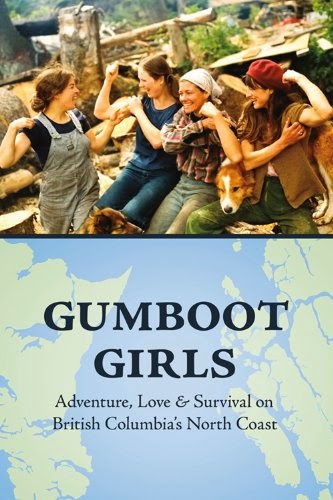"Gumboot Girls" by Jane Wilde
Do you ever feel out of step with time? My grandmother always said I was born a generation too late because I enjoyed visiting her on the farm so much. Then it took me thirty-five years to get in the spirit of the hippie back to land movement.
 I’m always on the lookout for books about women who’ve chosen to live in remote locations. Last month on a BC Ferry ride from Horseshoe Bay to Langdale I found such a book. Gumboot Girls: Adventure, Love and Survival on British Columbia’s North Coast is a collection of thirty-four memoirs that was compiled by Jane Wilde and edited by Lou Allison (Caitlan Press, 2014).
I’m always on the lookout for books about women who’ve chosen to live in remote locations. Last month on a BC Ferry ride from Horseshoe Bay to Langdale I found such a book. Gumboot Girls: Adventure, Love and Survival on British Columbia’s North Coast is a collection of thirty-four memoirs that was compiled by Jane Wilde and edited by Lou Allison (Caitlan Press, 2014).
Jane was among many adventurous women who came to Coastal British Columbia in the 1960s and 1970s. This book highlights the lives of fifteen women who landed in the remote islands of Haida Gwaii (known then as the Queen Charlottes). An additional nineteen women made their homes in or near Prince Rupert on the mainland.
From all across Canada, the United States, and even France they came. Many were drawn because of the desire to live a self-sufficient lifestyle away from the pressures of society, some followed men avoiding the draft and Vietnam War, some followed family and friends who had gone before them, and some came just for the experience of a lifetime.
 |
| Prince Rupert waterfront cafe in 1994. |
 |
| Prince Rupert fishing boats in 1994. |
Some of the women stayed, but most moved on to finish their education or return to larger cities. Even so, their north coast experience shaped their futures and those years were never forgotten.
These were my formative years too. But it took me a much longer time break my bonds with city life and follow my dreams to Coastal BC. How about you? -- Margy


























































